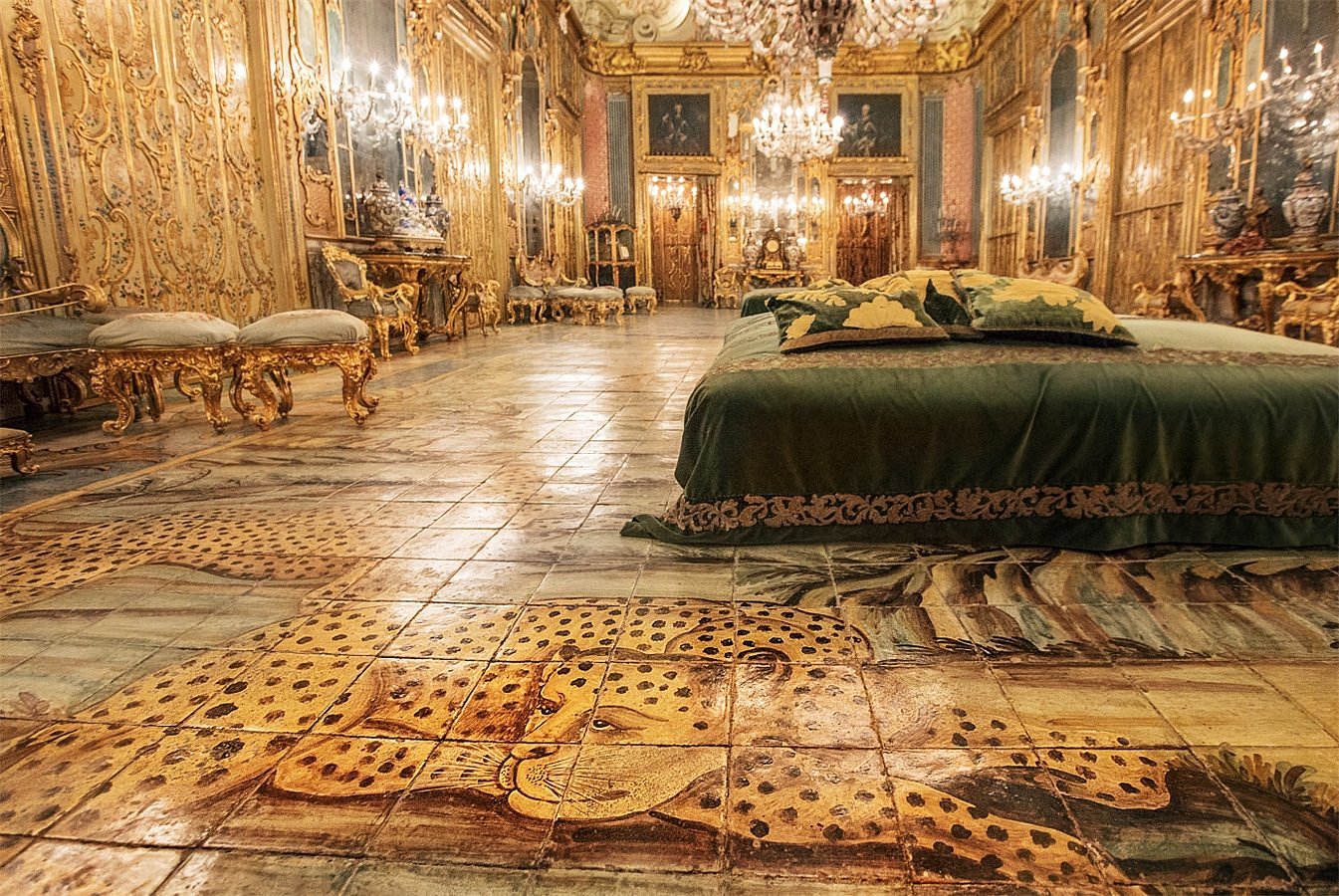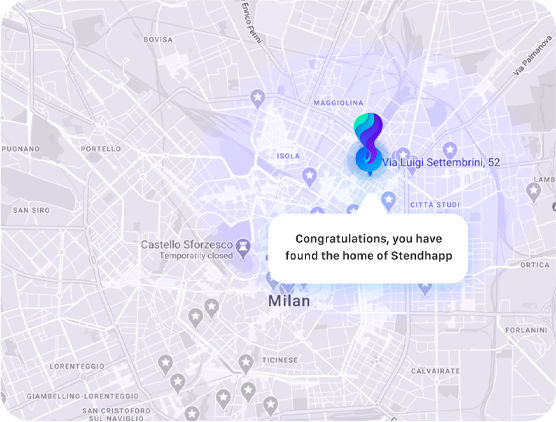The places of the novel, the places of the movie, and those of the life of the famous Sicilian author: the complete itinerary
Sicilians tell a silent, constant pilgrimage of Italian and foreign visitors who land on the tracks of the author of the Leopard and get lost.
They lose themselves in the chaotic beauty of Palermo, in the ruins of palaces that were once magnificent and in the discovery of others that have been restored in their ancient beauty; then they venture into the trazzere of the hinterland captivated by the game of identification between the places that Tomasi di Lampedusa recounts in his works and those of reality, that is, those of his life.
The Donnafugata of The Leopard is not the one we imagine
In front of the castle of Donnafugata they then discover the bitter truth: that is not the palace where Lampedusa takes Angelica and Tancredi in the abandoned apartments of the Salina’s residence, in a sensual aura that pervades the space; in the village described in the novel revives both the beautiful palace of Santa Margherita del Belice, happy place of the author’s childhood, and the memory of Palma di Montechiaro, where Lampedusa returns before dying, to find the prestige of the family of which he had experienced the decadence, as he explains in a letter to his friend Baron Merlo:
Donnafugata as a town is Palma; as a palace is Santa Margherita.
If it is true that the places of our lives become part of each of us, for Tomasi di Lampedusa this assumption is much more valid: the house where he was born and the buildings that belonged to his family are a pillar of his identity, as well as happy places lost through expropriation or bombardment.
The author’s mother, Beatrice Mastrogiovanni Tasca di Cutò, passing by the walls of Palazzo Lampedusa, would reach out her hand to touch them and bring her fingers to her lips, to then put them back on the plaster; even when it was half-destroyed by bombings in 1943, she did not want to abandon it and moved to the rooms that remained intact, where she died alone.
The places of Tomasi di Lampedusa in Palermo
Palazzo Lampedusa, where the author was born on December 23, 1896, is a recent reconquest: for decades it lay in a state of complete abandonment, as told by David Gilmour, who sneaked among the rubble recovering letters and other objects.
Today you can visit the magnificent courtyard: from 2011 to 2015 it was reconstructed keeping in mind also the Writer’s Childhood Memories, where he describes it extensively, so bring the book with you when you visit; the apartments are private and visits are organized from time to time.
It is located in via Lampedusa 23. In the Childhood Memories we can read:
The house (and I want to call it a house and not a palace, a name that has been given to the fifteen-storey phalansteries as it is now) was holed up in one of the most secluded streets of old Palermo, in Via Lampedusa, at number 17, a number full of bad omens but which at the time served only to add a sinister flavor to the joy it could dispense. (Later, when the stables were transformed into warehouses, we asked that the number be changed and it became 23, we were nearing the end: the number 17 brought her good luck).
Palazzo Lanza Tomasi, in via Butera, is the residence where the author spent the last years of his life together with his wife and where today resides his adoptive son and curator of his works: Gioacchino Lanza Tomasi. In those rooms, among other things, took place the English and French literature lessons that Lampedusa accepted to hold for very few friends: from the notes he took in that occasion were born some collections published today in the Meridiani Mondadori.
It is located in the ancient Arab district Kalsa and today houses a museum dedicated to the author: it is possible to visit the library and the ballroom in which are exposed his manuscripts, including that of The Leopard and, indeed, of the mentioned Lessons, along with many others; much of the furniture comes from the house where the author was born.
Ex Hotel Trinacria, also in via Butera: here Tomasi di Lampedusa sets the death of his protagonist, don Fabrizio Salina; the last affront for a fallen nobleman, in fact, to die in the most impersonal place possible: a hotel room. Today it hosts exhibitions.
Villa Tomasi in San Lorenzo Colli was part of the family properties: Lampedusa’s great-grandfather used his telescopes there, but I wouldn’t include it in the itinerary, since it is in ruins.
Where Visconti’s The Leopard was filmed
Also in Palermo, add to your Lampedusa itinerary Palazzo Valguarnera Gangi, where Visconti shot the scenes of the ball. Among the director’s consultants there was also Lampedusa’s adopted son: making a film as faithful to reality as possible was almost an obsession for Visconti, which is why he chose period costumes, and Don Fabrizio’s telescopes were those that belonged to the author’s great-grandfather, the Fabrizio who inspired him to create the character.
“It was shot from life by constructing the real thing,” screenwriter Suso Cecchi d’Amico later observed.
Among the longest scenes of the film, in addition to the dance, there is the one of the entrance of the Thousand in Palermo, where it was essential to reproduce poor and decadent spaces and unfortunately Visconti had no difficulty in finding them in Palermo, where among other things the rubble of the Second World War survived for a long time. Now those urban spaces have been restored, if you want to walk through them you can find them in:
- piazza di San Giovanni Decollato, with the church of the same name
- piazzetta delle vittime
- via del fondaco
- piazza Magione
- piazza della Vittoria allo Spasimo
- piazza Sant’Euno
- piazza della Marina.
Finally, the church to which Don Fabrizio accompanies Father Pirrone before his amorous foray to Mariannina’s is the Biblioteca Comunale, on Via Casa Professa.
Villa Boscogrande in Cardillo, near Palermo, was the set for the film’s opening titles: the shots above the expanse of citrus trees in front of the building’s facade and the pauses on the majolica terrace, the curtains shaken by the wind as the Rosary is concluded and the characters who take to interacting with the space each in their own way, depending on their social class.
This is one of the novel’s most fascinating interpretations: the characters’ interactions with space change as the aristocratic class disintegrates and the bourgeois Angelica makes her way in. It is when she enters the scene that the balance begins to crumble, and with it the splendor of the environments.
Donnafugata of The Leopard
To shoot the scenes that in the novel are set in Donnafugata, on the advice of Gioacchino Lanza Tomasi, Visconti chooses Ciminna, a small town near Palermo; in the church of Santa Maria Maddalena, in Piazza Matrice, there are wooden benches that turned out to be perfect for the series of close-ups of the Salina family, as decayed as their class; but the location requires more than a few retouches to the exteriors for the fidelity to the book and to the taste of a director of noble descent who in all probability must feel very close to his the story of The Leopard.
Visit the places of the novel: The Leopard and Palma di Montechiaro
Let us return to the places of reality. Tomasi di Lampedusa until his death is patron of Palma di Montechiaro, due to the fact that his ancestors founded it in the 1600s; among them also Isabella Tomasi, the Beata Corbera of the novel.
It is here that literary fiction and reality intertwine: in Donnafugata, Don Fabrizio pays a visit to the cloistered Benedictine Monastery, and he is the only man who can access it, precisely because of his position as patron of the place. This episode of the novel stems from the visit that Lampedusa makes to Palma di Montechiaro a few years after his death, along with his adopted son and his girlfriend; he enters the monastery, only he, and also visits the Castle.
Another place to visit is Palazzo Ducale, which in the past was the seat of public offices and is now open to the public. There is a famous scene from a famous documentary about Lampedusa, in which an employee of those offices candidly said he did not know why visitors came to observe the wooden ceiling where the coat of arms of the Tomasi family, the lion rampant, stood out.
Santa Margherita del Belice, the garden of The Leopard
One of the most beloved places by Tomasi di Lampedusa and his mother was Palazzo Filangeri di Cutò in Santa Margherita del Belice, a name that will evoke in your thoughts the earthquake that partially destroyed it in 1968.
First, however, Lampedusa’s family lost it because of a family member’s debts.
This is another of the lost paradises of the prince’s childhood: an immense villa with a lush garden, the same in which the protagonist of the novel enjoys watching the dog ravaging flowerbeds where the heat makes even the smell of flowers degenerate; a villa with an adjoining theater and the adjacent church.
Nowadays it houses the Town Hall and the Literary Park Giuseppe Tomasi di Lampedusa, where you can admire reproductions of the original manuscript of The Leopard, letters, and photos of the time; it also houses a museum that celebrates the film by Visconti.
We close this long enumeration with another beloved place to be included in the itinerary: Villa Piccolo at Capo d’Orlando, the residence of the author’s cousins. The villa overlooks a hill from which you can see the sea, on one side, and on the other side, you can see an immense garden where you can find the cemetery of the family dogs, the pergola with the wisteria, a long bench called “the pensieve“, fruit trees, mirrors of water and flowers. He wrote a part of his novel here and certainly, the garden must have inspired him.
You can still visit the room where he slept when he came to visit his aunt and cousins Giovanna, Lucio, and Casimiro, of whom there are magnificent watercolors depicting fantastic creatures. Of Lucio Piccolo, we can still read the poems that Montale liked a lot, to whom we owe their publication. Also, this literary success of his cousin had to inspire Lampedusa to write his own novel, even if the editorial vicissitude of The Leopard was very troubled: refused by Vittorini for the series “I Gettoni” of Einaudi, it passed for the drawer of Elena Croce and for the hands of Giorgio Bassani, to whom we owe the publication with Feltrinelli only in 1958, after the death of the author.
Lampedusa died in ’57, thinking that it would not be published.





